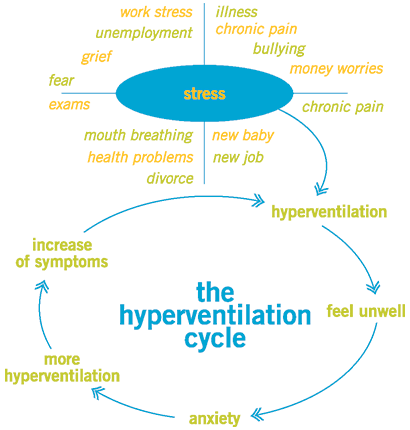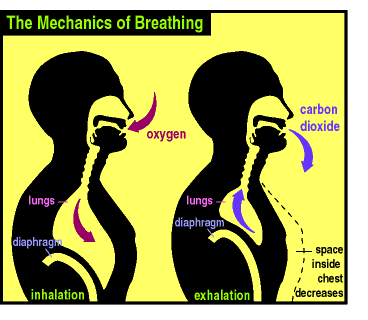




Techniques used in Buteyko Breathing
can lower blood pressure.
It’s a technique that’s found increasing success amongst asthmatics in recent years, but the Buteyko method is now gaining recognition for its ability to lower blood pressure too. Ironically, Buteyko was initially developed in Russia as a way to relieve hypertension, a fact that has since become obscured by the method’s success with treating asthma.
In fact, Buteyko has been found to have positive effects on a wide range of breathing-related conditions including not only asthma and high blood pressure but also sleep apnoea, snoring, emphysema and stress and anxiety disorders.
What is Buteyko breathing?

The principle behind the Buteyko method is that we’ve conditioned our bodies to over-breathe or, in other words, to hyperventilate. This can come about in a number of ways but stress is often a contributing factor. Whatever the cause, the results are unbalanced and therefore unhealthy levels of oxygen and carbon dioxide in our blood.
While it’s true that our bodies require steady and sufficient supplies of oxygen, this life-giving gas is rendered useless if not correctly balanced with carbon dioxide. But our fast and erratic breathing builds up excess levels of oxygen along with insufficient supplies of carbon dioxide.
So, contrary to popular belief, it’s not more oxygen that we need but more carbon dioxide! Furthermore, the deep breathing so frequently advised for health purposes only makes matters worse by provoking hyperventilation. This is why so many people complain of anxiety or other ill effects encountered through deep breathing.
The Buteyko method seeks to redress this by balancing the body’s levels of oxygen and carbon dioxide. It achieves this by teaching practitioners to inhale through the nose rather than through the mouth, to significantly slow their rate of breathing and to breathe much more shallowly than most people tend to do.
Breathing shallowly may seem counter-intuitive but the effects of too much oxygen are clear. Each of the recommended changes in breathing helps to limit the amount of oxygen we take in while increasing levels of carbon dioxide. The result is a better balance of gases and thus healthier blood chemistry, all of which produces an increased feeling of wellbeing.
So what does this mean for sufferers of high blood pressure? Medical experts know that gas levels and other aspects of blood chemistry play a vital role in regulating blood pressure. And of course our breathing is largely responsible for delivering the correct balance of gases.
 Breathing:
it’s not something we often stop to think about…
it’s just natural, isn’t it?
But the fact is that breathing is not a simple linear equation. Not
only the
amount we breathe but the way we breathe determines
delivery of the
correct gas mixture in a similar way as a carburettor. A tune-up using
the
Buteyko method appears to be an effective adjustment for many people
fighting
high blood pressure.
Breathing:
it’s not something we often stop to think about…
it’s just natural, isn’t it?
But the fact is that breathing is not a simple linear equation. Not
only the
amount we breathe but the way we breathe determines
delivery of the
correct gas mixture in a similar way as a carburettor. A tune-up using
the
Buteyko method appears to be an effective adjustment for many people
fighting
high blood pressure.
The method offers one further benefit that’s often overlooked: oxygen and carbon dioxide are not the only gases involved with blood pressure. Nitric oxide is an invisible gas that plays a critical role in regulating it. Low levels of nitric oxide cause blood vessels to contract and raise blood pressure while increased levels relax and dilate blood vessels, thus lowering blood pressure.
Nitric oxide is produced in our cells – we don’t inhale it from the atmosphere – but it turns out that the nasal sinuses are major producers. Inhaling though the nose as practiced by the Buteyko method helps to provide a steady, high supply of the gas. The effects of elevated levels of nitric oxide to reduce blood pressure are well documented and give a boost to the therapeutic claims of Buteyko and similar methods of breathing.
Last but not least, Buteyko breathing has been shown highly effective at reducing stress, a major contributor to and sometimes an outright cause of hypertension. Unlike many other methods of stress management, Buteyko and similar methods of breathing can effectively relieve stress within just a few short minutes. In fact, regular practice of only 10 to 15 minutes a day has been shown to produce lasting reductions in both stress and high blood pressure.
Of course, the Buteyko method is not a miracle cure (as if such a thing existed). High blood pressure is a complex condition with many possible causes; problematic breathing is just one of them. Having said that, Buteyko and similar methods of breathing are totally safe and natural when not taken to extremes and offer a huge range of benefits. These methods are definitely worth fitting into your life, especially if it’s a very busy one!
Speaking of similar methods, a practice called slow breathing, often used with the help of biofeedback machines or music programs, is a well-established and clinically proven method of natural blood pressure control. Slow breathing and Buteyko are widely thought to be conflicting methods but deeper examination reveals that they are actually very similar in practice. The impressive results being gained by both methods reinforce the principles behind breathing for better health. And seldom do you find something so safe and natural that is also so effective.
Click here to learn more about a simple and enjoyable method of breathing combined with music for lower blood pressure and many other health benefits.
5 The Grange
6 St. Augustins Road
Bournemouth BH2 6NX
United Kingdom
http://www.control-your-blood-pressure.com
(1) 877-435-1985
Contact Us
info@control-your-blood-pressure.com
Toll Free (877) 435-1985
My
Natural Health Blog
 Follow Us via RSS
Follow Us via RSS
Home
The
"System"
Demo
Product Features
Clinical Trials
Real-Life Results
Articles
Videos
FAQ
About
Contact Us
14525 SW Millikan Way #36650
Beaverton, OR 97005-2343
United States
http://www.control-your-blood-pressure.com
Toll Free: (877) 435-1985